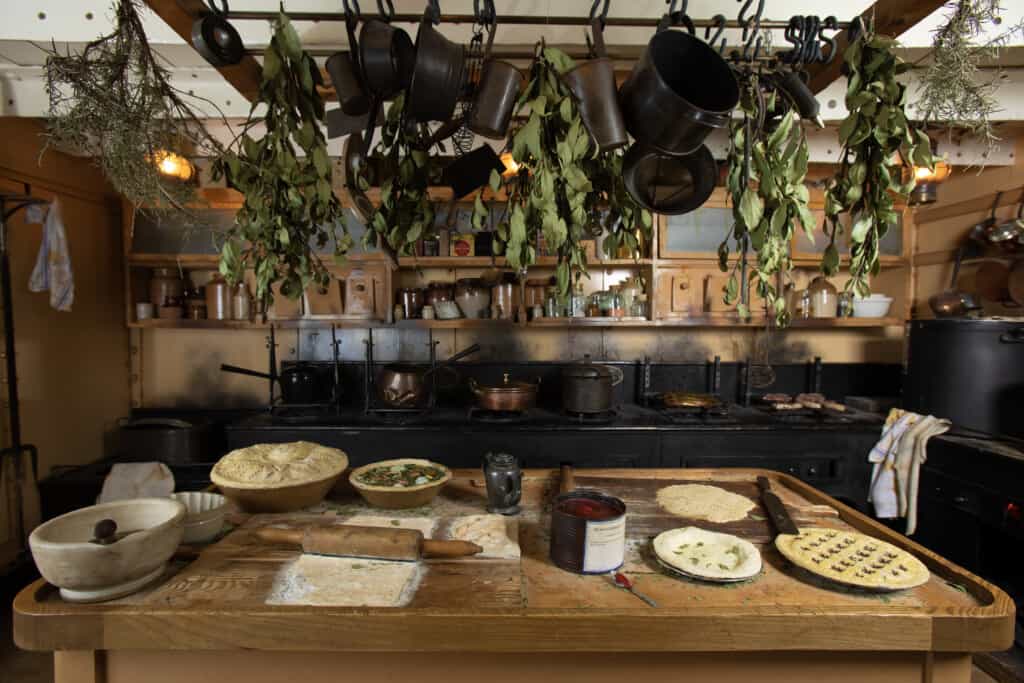The ship, upon disembarking from Liverpool for its average 60-day voyage to Melbourne, Australia would be loaded with, up to: “2 oxen, 1 milk cow, 30 pigs, 150 sheep, 2 lambs, 1 calf, 56 turkeys and geese, 250 ducks, 550 fowls”. The ship promised its 1st class passengers the equivalent of a luxury hotel dining experience and, in order to ensure this, all fresh meat needed to be carried alive! After all, portable refrigeration units wouldn’t be introduced to family homes, let alone ships, until the 20th century.
Given that life on board a ship for 60 days would be fairly limited, something that all passengers and crew, no matter what their class, had in common was mealtimes and they enjoyed talking and writing about what was consumed on the SS Great Britain.
The type and quality of food consumed definitely depended on your class of travel. If you were a passenger in the After Saloon (1st Class) you could expect quite a variety of delightful dishes. A Bill of Fare from a voyage in 1869 advertises a whole range of meats from beef, turkey, duck to geese and fowl, as well as a whole host of delicious desserts such as pancakes, fruit tarts, French pastries and rice pudding. Would you think of rice pudding as a luxury dessert today?






